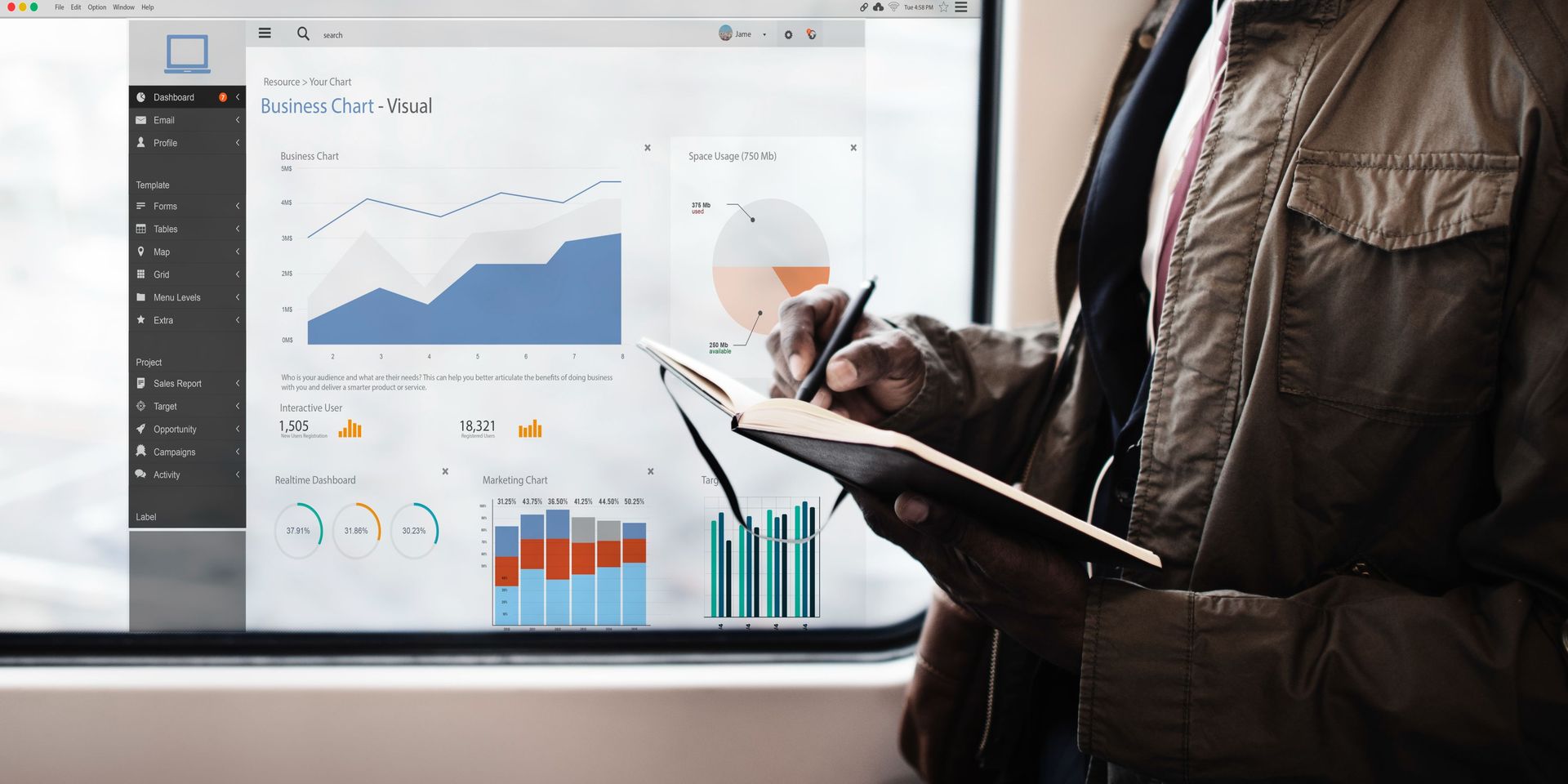Efficient inventory management is the backbone of a successful retail business. It plays a crucial role in ensuring smooth operations, maximizing profitability, and delivering a superior customer experience. However, many retailers struggle with the complexities and challenges associated with managing their inventory effectively.
Importance of Efficient Inventory Management in the Retail Industry
Inventory management is the art of balancing supply and demand to ensure optimal stock levels. It directly impacts a retailer's ability to meet customer needs, minimize costs, and maximize profits. When inventory is managed systematically, businesses can avoid stockouts, reduce excess inventory, and make better purchasing decisions. This leads to improved customer satisfaction, increased sales, and higher profit margins.
Challenges Faced by Retailers in Managing Inventory Effectively
Retailers face numerous challenges when it comes to inventory management. These challenges include inaccurate demand forecasting, ineffective order fulfillment processes, complex supply chains, and the need to synchronize inventory across multiple sales channels. Additionally, rapid changes in consumer behavior, market trends, and the ongoing labor shortage problem further compound the difficulties faced by retailers in maintaining optimal inventory levels.
We will delve into the complexity of retail inventory management and provide actionable strategies to overcome common challenges. Our goal is to equip retail and restaurant executives with the knowledge and tools they need to streamline their inventory operations, boost efficiency, and drive profitability. From demand forecasting and inventory control to supply chain optimization and leveraging technology, we will explore various aspects of mastering retail inventory management.
By the end of this blog, you will have a clear understanding of the significance of advanced inventory management, the challenges faced by retailers, and a roadmap for implementing effective inventory management strategies in your own business.
Let's dive in and unlock the secrets to achieving efficiency and profitability through advanced retail inventory management.
The Impact of Inventory Management on Operational Efficiency and Profitability
Inventory management has a profound impact on the overall operational efficiency and profitability of retail businesses. When inventory is properly managed, retailers can minimize stockouts and overstock situations, ensuring that they have the right products available at the right time and in the right quantities. This leads to improved customer satisfaction, as shoppers can find what they need when they need it, resulting in increased sales and repeat business.
Moreover, streamlined inventory management allows retailers to optimize their cash flow by reducing excess inventory and avoiding tying up capital in slow-moving or obsolete products. By having a clear understanding of demand patterns and inventory turnover, retailers can make better decisions and negotiate favorable terms with suppliers, ultimately improving their bottom line.
Key Metrics to Measure Inventory Performance and Their Implications
To gauge the effectiveness of inventory management, retailers should track and analyze key metrics that provide insights into inventory performance. These metrics include:
Inventory Turnover: This metric measures how quickly a retailer sells its inventory within a specific time period. A higher inventory turnover ratio indicates structured inventory management, as it signifies that products are moving off the shelves at a faster rate.
Stockout Rate: The stockout rate measures the frequency at which products are unavailable for sale due to insufficient inventory. A high stockout rate can result in missed sales opportunities and customer dissatisfaction, negatively impacting revenue and reputation.
Gross Margin Return on Inventory Investment (GMROI): GMROI measures the profitability of inventory by evaluating the relationship between the gross margin generated from sales and the investment in inventory. It helps retailers identify which products or product categories contribute the most to their profitability.
Carrying Cost of Inventory: Carrying costs include expenses related to holding and storing inventory, such as warehousing, insurance, depreciation, and obsolescence. Monitoring carrying costs helps retailers assess the financial impact of holding inventory and make optimum decisions regarding stock levels.
Common Pitfalls and Consequences of Poor Inventory Management
Poor inventory management can have severe consequences for retailers. Some common pitfalls include:
Stockouts and Lost Sales: Inadequate inventory levels can lead to frequent stockouts, resulting in lost sales and dissatisfied customers who may take their business elsewhere.
Excess Inventory and Holding Costs: Overstocking can tie up valuable capital and storage space, leading to increased carrying costs and potential losses due to obsolescence or markdowns.
Inaccurate Demand Forecasting: Failure to accurately forecast demand can result in imbalances between supply and demand, leading to stockouts or excess inventory.
Increased Ordering and Replenishment Costs: Inefficient ordering processes, such as frequent small orders or rush orders, can incur higher costs and impact profitability.
Also read this: The Future of Retail: How Cyntra is Leading the Way
Strategies for Optimizing Inventory Management

Accurate Demand Forecasting and Planning
By utilizing data-driven forecasting techniques, retailers can anticipate customer demand and ensure the right products are available at the right time. Some key considerations in this area include:
- Importance of Data-Driven Forecasting Techniques: Traditional forecasting methods often fall short in capturing the complexities of modern consumer behavior. By leveraging advanced analytics and incorporating historical data, market trends, and customer insights, retailers can gain a deeper understanding of demand patterns and make more informed forecasting decisions.
- Leveraging AI/ML-Based Analytics for Demand Prediction: Artificial intelligence and machine learning technologies offer powerful tools for demand prediction. These advanced analytics techniques can analyze vast amounts of data, identify patterns, and generate accurate forecasts. By harnessing AI/ML-based analytics, retailers can optimize inventory levels, minimize stockouts, and reduce excess inventory.
- Benefits of Integrating Historical Data, Market Trends, and Customer Insights: Integrating various data sources, including historical sales data, market trends, and customer insights, allows retailers to develop a comprehensive view of demand patterns. By understanding customer preferences, seasonal fluctuations, and market dynamics, retailers can make data-driven decisions regarding inventory levels, pricing strategies, and promotional activities.
Efficient Inventory Control and Ordering
Efficient inventory control and ordering practices play a critical role in maintaining optimal stock levels and minimizing costs. By implementing the following strategies, retailers can enhance inventory management:
- Implementing Just-in-Time (JIT) Inventory Management: Just-in-Time inventory management aims to minimize inventory holding costs by receiving goods from suppliers only when they are needed for production or sale. By closely aligning inventory levels with actual demand, retailers can reduce carrying costs, minimize the risk of obsolescence, and improve cash flow.
- Utilizing RFID Technology for Real-Time Tracking and Monitoring: RFID (Radio Frequency Identification) technology enables real-time tracking and monitoring of inventory items throughout the supply chain. By attaching RFID tags to products, retailers can gain accurate visibility into stock levels, automate inventory counts, and enable more efficient replenishment processes.
- Advantages of Using Advanced Reporting and Analytics Tools: Advanced reporting and analytics tools provide retailers with valuable insights into inventory performance and trends. By utilizing these tools, retailers can monitor key metrics such as inventory turnover, stock accuracy, and fill rate. This enables timely decision-making, identification of underperforming products, and optimization of inventory control strategies.
Inventory Segmentation and ABC Analysis
Inventory segmentation and ABC analysis are effective techniques for categorizing products based on their value and demand patterns. This allows retailers to prioritize stock management efforts and allocate resources more efficiently. Consider the following aspects:
- Classifying Inventory Based on Value and Demand Patterns: By categorizing products into different segments based on their value (high, medium, low) and demand patterns (fast-moving, slow-moving, non-moving), retailers can tailor their inventory management strategies accordingly. This ensures that high-value and fast-moving items receive appropriate attention, while minimizing resources allocated to low-value or slow-moving products.
- Applying ABC Analysis to Prioritize Stock Management Efforts: ABC analysis involves classifying products into three categories: A, B, and C, based on their contribution to revenue or profit. Category A includes high-value items with significant contribution, while category C includes low-value items. By focusing on managing and replenishing category A items more frequently, retailers can optimize stock levels and reduce stockouts for high-demand products.
- Benefits of Optimizing Stock Levels and Reducing Holding Costs: By segmenting inventory and applying ABC analysis, retailers can optimize stock levels, reduce holding costs, and free up capital for other business initiatives. This approach ensures that high-demand items are adequately stocked, minimizing lost sales opportunities, while also avoiding excess inventory and associated holding costs.
Streamlining Supply Chain and Vendor Management
Efficient supply chain and vendor management are essential components of successful inventory management. By establishing strong partnerships with reliable suppliers and embracing automation and digitization, retailers can streamline logistics and improve overall inventory control. Consider the following strategies:
- Building Strong Partnerships with Reliable Suppliers: Developing strong relationships with reliable suppliers is crucial for ensuring a consistent supply of quality products. By fostering open communication, negotiating favorable terms, and collaborating on demand forecasting and planning, retailers can mitigate supply chain risks, reduce lead times, and improve overall inventory availability.
- Embracing Automation and Digitization for Smoother Logistics: Automation and digitization play a pivotal role in streamlining supply chain operations. Retailers can leverage technology solutions such as automated order processing, electronic data interchange (EDI), and transportation management systems (TMS) to improve order accuracy, reduce manual errors, and enhance overall supply chain efficiency.
- Collaborative Forecasting and Demand Sharing with Suppliers: Collaborative forecasting and demand sharing initiatives involve sharing sales data and insights with suppliers to enable more accurate demand forecasting and planning. By collaborating closely with suppliers, retailers can align inventory levels with anticipated demand, reduce stockouts, and foster a mutually beneficial relationship based on trust and transparency.
By implementing these strategies for optimizing inventory management, retailers can enhance operational efficiency, reduce costs, minimize stockouts, and improve overall profitability. Embracing advanced technologies, data-driven decision-making, and collaborative approaches to supply chain management will position retailers for success in today's competitive retail landscape.
Using Technology for Enhanced Inventory Management

Inventory Management Software Solutions
Features and Benefits of Inventory Management Software
Inventory management software offers a range of features and benefits that can significantly enhance inventory management processes. These include:
- Real-time Inventory Tracking: Inventory management software provides real-time visibility into stock levels, allowing retailers to accurately monitor inventory and make informed decisions about reordering and replenishment.
- Centralized Inventory Control: With inventory management software, retailers can consolidate inventory data from multiple locations or channels into a single, centralized system. This enables better control, coordination, and synchronization of inventory across the business.
- Automated Order Management: Inventory management software automates order processing, ensuring efficient order fulfillment and reducing manual errors. It enables retailers to streamline the entire order management process, from order placement to shipment tracking.
- Demand Forecasting and Analytics: Many inventory management software solutions offer advanced forecasting capabilities, leveraging historical data and market trends to predict future demand. These analytics tools provide valuable insights for inventory planning, optimizing stock levels, and avoiding stockouts or overstock situations.
Evaluating Options for Small Businesses and Their Scalability
When choosing inventory management software for small businesses, it's important to consider scalability. Selecting a solution that can grow with the business is crucial to avoid the need for frequent software changes. Key factors to evaluate include:
- Scalability: Ensure the software can accommodate the business's growth in terms of product range, order volume, and the number of locations or channels.
- User-Friendly Interface: Look for software that is easy to use and requires minimal training. A user-friendly interface facilitates adoption and ensures smooth integration into existing workflows.
- Customization Options: Consider whether the software allows customization to meet specific business needs. Flexibility in adapting the software to unique inventory management requirements is essential for optimal performance.
- Integration Capabilities: Evaluate the software's compatibility with other business systems such as point-of-sale (POS) systems, e-commerce platforms, and accounting software. Integration streamlines data flow and eliminates manual data entry, improving efficiency and accuracy.
Importance of Integration with Other Business Systems
Integration between inventory management software and other business systems is crucial for seamless operations and data flow. When inventory management software is integrated with POS systems, e-commerce platforms, and accounting software, it enables:
- Automatic Inventory Updates: Integration ensures that inventory levels are automatically updated across all channels whenever a sale or purchase is made, reducing the risk of overselling or stockouts.
- Accurate Financial Reporting: Integrating with accounting software allows for accurate financial reporting, as inventory data can be easily reconciled with sales and cost of goods sold (COGS) figures.
- Streamlined Order Fulfillment: Integration with POS systems and e-commerce platforms enables successful order processing, as orders can be automatically sent to the inventory management software for fulfillment.
- Enhanced Efficiency and Accuracy: By eliminating manual data entry and reducing the chances of errors, integration between systems improves operational efficiency and ensures accurate inventory records.
Mobile Point of Sale (mPOS) Systems
Advantages of Using mPOS for Inventory Management
Mobile Point of Sale (mPOS) systems offer several advantages for inventory management:
- Flexibility and Mobility: mPOS systems enable retailers to perform inventory-related tasks on-the-go. Store associates can use mobile devices, such as tablets or smartphones, to perform inventory counts, update stock levels, and process transactions from anywhere in the store.
- Real-Time Inventory Updates: With mPOS systems, inventory updates happen in real-time. When a sale is made, the inventory is immediately adjusted across all channels, providing accurate and up-to-date stock information. This helps prevent overselling and improves inventory accuracy.
- Efficient Order Management: mPOS systems streamline the order management process by allowing store associates to view product availability, check stock levels, and place orders for out-of-stock items directly from the sales floor. This reduces the need for manual communication and improves order fulfillment efficiency.
Enhancing Customer Experience with Mobile Checkout Options
mPOS systems enhance the customer experience by offering mobile checkout options. Customers no longer have to wait in long queues or visit traditional fixed-point checkout counters. Store associates equipped with mobile devices can complete transactions anywhere in the store, providing a faster and more convenient checkout process.
- Reduced Wait Times: Mobile checkout eliminates the need for customers to wait in long lines, resulting in shorter wait times and a more effective shopping experience.
- Personalized Service: Store associates using mPOS devices can provide personalized assistance to customers, answering product-related questions, checking stock availability, and facilitating transactions right at the point of interaction.
- Seamless Omni-channel Experience: mPOS systems enable seamless integration between in-store and online channels. Customers can make purchases in-store using mobile devices, and their order history and loyalty program information can be synced across channels, creating a unified and personalized shopping experience.
Integration with Inventory Tracking and Reporting Tools
mPOS systems can integrate with inventory tracking and reporting tools, further enhancing inventory management capabilities. By connecting mPOS systems with inventory management software or analytics platforms, retailers can:
- Track Sales Performance: Integration allows sales data from mPOS transactions to be captured and analyzed alongside inventory data. This provides insights into product performance, sales trends, and inventory turnover rates, enabling informed decision-making and inventory optimization.
- Streamline Reordering: Integration with inventory tracking tools enables automatic stock level monitoring. When stock levels reach a predetermined threshold, the system can trigger reordering processes, ensuring timely replenishment and minimizing stockouts.
- Unified Reporting: By integrating mPOS systems with reporting tools, retailers can generate comprehensive reports that combine sales, inventory, and customer data. This facilitates a holistic view of business performance and enables data-driven decision-making.
mPOS systems offer the flexibility of mobile inventory management, improve the customer experience with mobile checkout options, and can be seamlessly integrated with inventory tracking and reporting tools. Mobile POS enhances operational efficiency, improves customer satisfaction, and enables retailers to make better decisions for optimized inventory management for both restaurant and retail businesses.
Omni-Channel Integration and Unified Inventory Management
Enabling Seamless Inventory Visibility Across Multiple Sales Channels
Omni-channel integration allows retailers to have a unified view of inventory across multiple sales channels, such as brick-and-mortar stores, e-commerce platforms, and mobile apps. By integrating inventory management systems with various sales channels, retailers gain real-time visibility into stock levels and can successfully track inventory movements across all channels. This enables accurate inventory allocation, prevents overselling, and ensures consistent availability of products to customers regardless of the channel they choose to shop from.
Benefits of Synchronizing Stock Levels and Reducing Overselling
Synchronizing stock levels across sales channels is essential for preventing overselling and maintaining accurate inventory records. By integrating inventory management systems with sales channels, retailers can automatically update stock levels in real-time when a sale is made, regardless of the channel. This prevents situations where customers make purchases online, only to find out later that the product is out of stock. Synchronized stock levels enhance customer satisfaction, minimize the risk of canceled orders, and improve overall inventory accuracy.
Using Data Analytics to Optimize Inventory Allocation and Replenishment
Omni-channel integration allows retailers to collect and analyze data from multiple sales channels, providing valuable insights for inventory allocation and replenishment strategies. By leveraging data analytics, retailers can:
- Identify Trends and Seasonality: Analyzing sales data from various channels helps identify patterns, trends, and seasonality in customer demand. This information can be used to optimize inventory levels, ensuring the right products are stocked in the right quantities at the right time.
- Optimize Inventory Allocation: Data analytics can provide insights into which products perform well in specific channels. Retailers can allocate inventory accordingly to maximize sales and customer satisfaction. For example, if certain products sell better online, more inventory can be allocated to the e-commerce channel.
- Improve Replenishment Processes: Analyzing sales and inventory data helps retailers optimize their replenishment processes. By understanding lead times, order quantities, and supplier performance, retailers can ensure timely replenishment, reduce stockouts, and avoid excess inventory.
Omni-channel integration and unified inventory management enable retailers to have a holistic view of inventory, prevent overselling, and optimize inventory allocation and replenishment. By leveraging data analytics and real-time inventory visibility, retailers can enhance customer satisfaction, increase sales, and operate with greater efficiency across all sales channels.
Also Read: How Cyntra's Swyft mPOS Helped Shoppers Stop Process $8.5M+ in Transactions in Under a Year
Overcoming Challenges and Future Trends

Addressing Labor Shortage Problems in the Retail Industry
The retail industry has been facing significant labor shortage problems, which can have a direct impact on inventory management. To overcome this challenge, retailers can consider the following strategies:
- Self Service Kiosk: Breez, the self-service kiosk solution by Cyntra that not only solves the labor shortage problem but also ensures faster checkouts. With Breez, customers can breeze through their shopping experience, making their purchases in just 30 seconds. By enabling customers to quickly and efficiently complete their transactions, Breez reduces the need for additional staff, thus addressing the labor shortage issue faced by many retail and restaurant businesses.
- Employee Training and Empowerment: Investing in employee training programs can improve efficiency and effectiveness in inventory management. By equipping employees with the necessary skills and knowledge, they can take on more responsibilities and right decisions regarding inventory control.
- Outsourcing and Collaborative Partnerships: Retailers can explore partnerships with third-party logistics providers or outsourcing certain aspects of inventory management to external experts. This allows retailers to leverage specialized knowledge and resources, mitigating the impact of labor shortages.
The Role of Gamified Experiences and Interfaces in Enhancing Inventory Management.
Gamification has gained popularity as a powerful tool to enhance user engagement and motivation. When applied to inventory management, gamified experiences and interfaces can improve efficiency and accuracy. Some potential benefits include:
- Increased Employee Engagement: Gamified experiences can make inventory management tasks more enjoyable and engaging for employees. By incorporating elements like challenges, rewards, and leaderboards, retailers can motivate their staff to perform inventory-related tasks with greater enthusiasm and accuracy.
- Improved Training and Onboarding: Gamified interfaces can be used as training tools to familiarize employees with inventory management processes and systems. By providing interactive and immersive experiences, employees can quickly grasp concepts, learn best practices, and become proficient in inventory management tasks.
- Error Reduction and Accuracy: Gamification can help reduce errors in inventory management by providing real-time feedback and corrective measures. Through interactive interfaces, employees can navigate inventory systems in a better way and avoid common mistakes, resulting in improved accuracy and data integrity.






